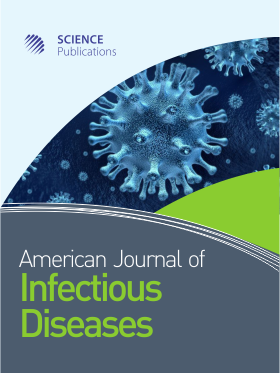UTILITY OF A COMBINATION ANTIBIOGRAM FOR TREATING PSEUDOMONAS AERUGINOSA
- 1 College of Medicine, United States
Abstract
Empiric combination antibiotic therapy is often used to treat severe P. aeruginosa infections. Combination antibiograms have been employed to assist clinicians in selecting the most effective two-drug antibiotic regimens. The objectives of this study were to develop a combination antibiogram in order to compare beta-lactam monotherapy versus dual-therapy with a fluoroquinolone or aminoglycoside, identify optimal combination regimens, describe the differences between combination therapies with an aminoglycoside versus a fluoroquinolone and to evaluate susceptibility rates based on the source of infection and Intensive Care Unit (ICU) or non-ICU location. A retrospective observational study at a Veterans Affairs (VA) hospital in the Southwestern region of the U.S. was conducted. P. aeruginosa isolates were collected between January 2008 and February 2012 in hospitalized veterans. A total of 374 isolates were included, of which 61 (16%) were obtained from the ICU. Susceptibility rates for monotherapy with a beta-lactam ranged from 83.7 to 90.6%. Collectively, all P. aeruginosa isolates benefited in coverage with the addition of a fluoroquinolone or an aminoglycoside to one of the beta-lactams considered for monotherapy (p<0.01 for each comparison). Monotherapy with a beta-lactam could be considered for mild to moderate wound infections which had beta-lactam susceptibility rates greater than 90% and the addition of a fluoroquinolone did not significantly extend the spectrum. Combination susceptibility rates ranged from 89.0 to 99.2%. Dual therapy of a beta-lactam with amikacin or tobramycin resulted in significantly better coverage than with a fluoroquinolone (p<0.03 for all combinations). For severe infections dual therapy with tobramycin or amikacin may be preferred over fluoroquinolones, but the risks versus benefits of aminoglycoside therapy must be weighed for each patient. In conclusion, combination antibiograms are useful for evaluating the treatment of P. aeruginosa. Choosing the ideal antibiotic regimen ultimately deals with many factors and results of this combination antibiogram are only specific to this institution.
DOI: https://doi.org/10.3844/ajidsp.2014.88.94

- 5,933 Views
- 3,526 Downloads
- 6 Citations
Download
Keywords
- Combination Antibiogram
- Pseudomonas aeruginosa
- Combination Therapy
- Monotherapy
